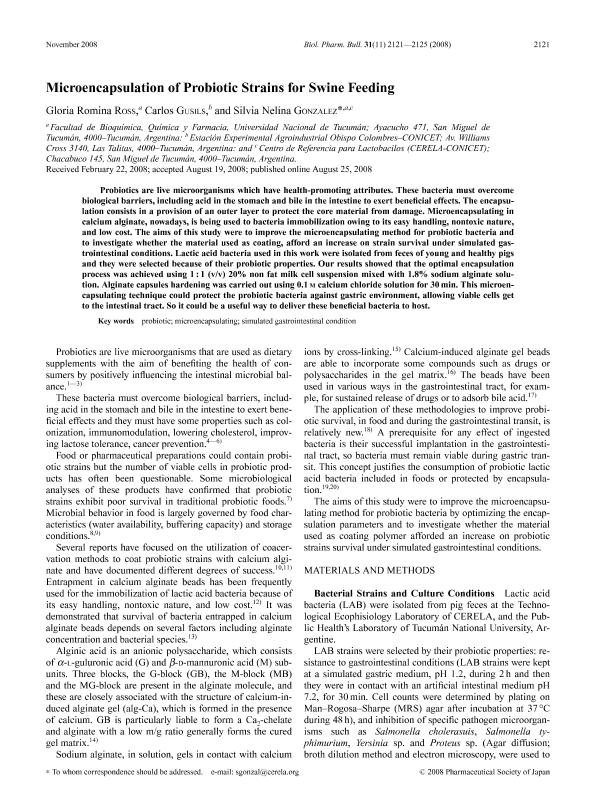Artículo
Microencapsulation of probiotic strains for swine feeding
Fecha de publicación:
11/2008
Editorial:
Pharmaceutical Soc Japan
Revista:
Biol. Pharm. Bull.
ISSN:
0918-6158
e-ISSN:
1347-5215
Idioma:
Inglés
Tipo de recurso:
Artículo publicado
Clasificación temática:
Resumen
Probiotics are live microorganisms which have health-promoting attributes. These bacteria must overcome biological barriers, including acid in the stomach and bile in the intestine to exert beneficial effects. The encapsulation consists in a provision of an outer layer to protect the core material from damage. Microencapsulating in calcium alginate, nowadays, is being used to bacteria immobilization owing to its easy handling, nontoxic nature, and low cost. The aims of this study were to improve the microencapsulating method for probiotic bacteria and to investigate whether the material used as coating, afford an increase on strain survival under simulated gastrointestinal conditions. Lactic acid bacteria used in this work were isolated from feces of young and healthy pigs and they were selected because of their probiotic properties. Our results showed that the optimal encapsulation process was achieved using 1:1 (v/v) 20% non fat milk cell suspension mixed with 1.8% sodium alginate solution. Alginate capsules hardening was carried out using 0.1 M calcium chloride solution for 30 min. This microencapsulating technique could protect the probiotic bacteria against gastric environment, allowing viable cells get to the intestinal tract. So it could be a useful way to deliver these beneficial bacteria to host.
Palabras clave:
Microencapsulating
,
Probiotic
,
Simulated Gastrointestinal Condition
Archivos asociados
Licencia
Identificadores
Colecciones
Articulos(CERELA)
Articulos de CENTRO DE REFERENCIA PARA LACTOBACILOS (I)
Articulos de CENTRO DE REFERENCIA PARA LACTOBACILOS (I)
Citación
Ross, Gloria Romina; Gusils Leon, Carlos Horacio; Gonzalez, Silvia Nelina; Microencapsulation of probiotic strains for swine feeding; Pharmaceutical Soc Japan; Biol. Pharm. Bull.; 31; 11; 11-2008; 2121-2125
Compartir
Altmétricas




